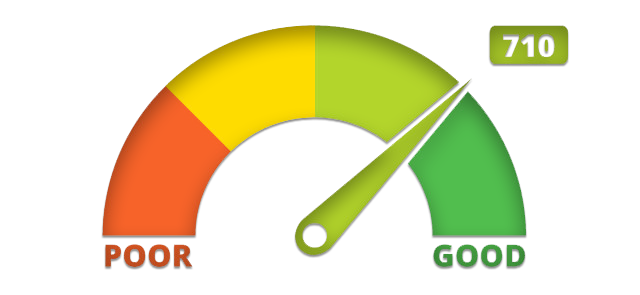
If you're not familiar with the book How to Make Money in Stocks, you're missing out on one of the most influential investment guides of all time. The book was first published in 1982. It is an investment classic that has stood the test of time, despite economic downturns. Inscribed on the front free endpaper, "Peter Hope this helps you build a great future," the book is a great read for anyone interested in stock markets.
CAN SLIM(r) Investing System by William J. O'Neil
The CAN SLIM Investing System was created from William O'Neil's research into the top-performing stock companies. This system was modified, and it has been shown to be successful in both good and poor times. In this paper, we will test the modified system and analyze its effectiveness.
The CAN SLIM Investing System uses a three year average of earnings per share in order to identify the top performers within any industry. To select the most profitable stocks, the system also considers the weighted average institutional shares. This is how the system wins in both good times as well as bad. It's a winning system that works in both good or bad times.

Investing in stocks
If you want to invest in stocks, it is essential to know what you should be looking for and what to avoid. You need to understand that stocks outperform other markets. These stocks are purchased by large money managers who have access to more information about the market that the average retail investor. These money managers tend not to buy quickly but steadily. However, you should not be afraid of new companies if they have strong institutional support. William O'Neil's book explains the key principles of growth investment, and includes the importance of looking for companies with strong institutional support.
William J. O'Neil's The Secret to Stock Investing Success is the second book. This book offers step-by–step guidance for all aspects of the investment process. The author has millions of followers and has made a name for himself with this system. Despite the book's popularity, this investment system works in good times and bad.
Stock investing can be risky
When you first start investing, it is easy to wonder if stocks will be safe. Although stocks have a longer-term advantage than other assets, they can be dangerous. Investors who are just starting out should look for companies that have steady growth in revenues and profits. These companies offer more margin for error. To avoid making mistakes, you have to be disciplined. Stocks are more liquid than any other type of investment.
The best way to minimize the risk of losing your principal is to invest in a diversified portfolio of stocks. Investing in large-cap stocks such as the S&P 500 can reduce the risk of losing your money over 20 years. Don't let historical data fool you into thinking stocks are completely safe. Even with the most robust portfolio, there's always risk. You never know when a stock may become popular and cause its price to rise.

Stocks can be a winning investment system
While stock market prices are volatile, you can make a profit by investing in them in good or bad times. You should avoid over-investing. Instead, buy only when there is a low market and sell only when there is a high price. Although you should always purchase stocks based upon your research and personal preferences, it's not a guarantee that they will remain at the same price for long. Moreover, past performance doesn't guarantee future results.
When selecting stocks to invest, track the ones that outperform and then sell the rest. According to William O'Neil, investing in leading companies is a winning system in both good and bad times. It's also a good idea to take a look at institutional ownership. Higher institutional ownership can indicate a company's positive prospects. The market trend is followed by three out of every four stocks, which is a good rule of thumb. Avoid stocks with a intermediate bearish trend.
FAQ
What investments are best for beginners?
Investors new to investing should begin by investing in themselves. They must learn how to properly manage their money. Learn how to prepare for retirement. How to budget. Find out how to research stocks. Learn how to read financial statements. How to avoid frauds Make wise decisions. Learn how diversifying is possible. Learn how to protect against inflation. Learn how you can live within your means. How to make wise investments. Learn how to have fun while you do all of this. You will be amazed at the results you can achieve if you take control your finances.
Do I need knowledge about finance in order to invest?
You don't need special knowledge to make financial decisions.
Common sense is all you need.
Here are some simple tips to avoid costly mistakes in investing your hard earned cash.
Be careful about how much you borrow.
Don't fall into debt simply because you think you could make money.
Also, try to understand the risks involved in certain investments.
These include inflation as well as taxes.
Finally, never let emotions cloud your judgment.
Remember that investing is not gambling. It takes skill and discipline to succeed at it.
This is all you need to do.
What should I look for when choosing a brokerage firm?
Two things are important to consider when selecting a brokerage company:
-
Fees - How much will you charge per trade?
-
Customer Service – Will you receive good customer service if there is a problem?
Look for a company with great customer service and low fees. You will be happy with your decision.
At what age should you start investing?
On average, $2,000 is spent annually on retirement savings. But, it's possible to save early enough to have enough money to enjoy a comfortable retirement. If you wait to start, you may not be able to save enough for your retirement.
Save as much as you can while working and continue to save after you quit.
The earlier you start, the sooner you'll reach your goals.
Consider putting aside 10% from every bonus or paycheck when you start saving. You might also consider investing in employer-based plans, such as 401 (k)s.
Contribute at least enough to cover your expenses. After that, it is possible to increase your contribution.
How do I begin investing and growing my money?
Start by learning how you can invest wisely. By learning how to invest wisely, you will avoid losing all of your hard-earned money.
Also, you can learn how grow your own food. It's not as difficult as it may seem. With the right tools, you can easily grow enough vegetables for yourself and your family.
You don't need much space either. Make sure you get plenty of sun. Consider planting flowers around your home. They are also easy to take care of and add beauty to any property.
Finally, if you want to save money, consider buying used items instead of brand-new ones. Used goods usually cost less, and they often last longer too.
What are the types of investments available?
Today, there are many kinds of investments.
These are the most in-demand:
-
Stocks - Shares in a company that trades on a stock exchange.
-
Bonds – A loan between parties that is secured against future earnings.
-
Real Estate - Property not owned by the owner.
-
Options - Contracts give the buyer the right but not the obligation to purchase shares at a fixed price within a specified period.
-
Commodities - Raw materials such as oil, gold, silver, etc.
-
Precious metals - Gold, silver, platinum, and palladium.
-
Foreign currencies - Currencies outside of the U.S. dollar.
-
Cash – Money that is put in banks.
-
Treasury bills - The government issues short-term debt.
-
Commercial paper - Debt issued by businesses.
-
Mortgages – Loans provided by financial institutions to individuals.
-
Mutual Funds: Investment vehicles that pool money and distribute it among securities.
-
ETFs are exchange-traded mutual funds. However, ETFs don't charge sales commissions.
-
Index funds – An investment strategy that tracks the performance of particular market sectors or groups of markets.
-
Leverage – The use of borrowed funds to increase returns
-
ETFs - These mutual funds trade on exchanges like any other security.
These funds offer diversification benefits which is the best part.
Diversification means that you can invest in multiple assets, instead of just one.
This helps to protect you from losing an investment.
Statistics
- Over time, the index has returned about 10 percent annually. (bankrate.com)
- An important note to remember is that a bond may only net you a 3% return on your money over multiple years. (ruleoneinvesting.com)
- Most banks offer CDs at a return of less than 2% per year, which is not even enough to keep up with inflation. (ruleoneinvesting.com)
- As a general rule of thumb, you want to aim to invest a total of 10% to 15% of your income each year for retirement — your employer match counts toward that goal. (nerdwallet.com)
External Links
How To
How to invest and trade commodities
Investing on commodities is buying physical assets, such as plantations, oil fields, and mines, and then later selling them at higher price. This process is called commodity trade.
Commodity investment is based on the idea that when there's more demand, the price for a particular asset will rise. The price of a product usually drops when there is less demand.
You don't want to sell something if the price is going up. You would rather sell it if the market is declining.
There are three major categories of commodities investor: speculators; hedgers; and arbitrageurs.
A speculator buys a commodity because he thinks the price will go up. He does not care if the price goes down later. A person who owns gold bullion is an example. Or someone who invests on oil futures.
A "hedger" is an investor who purchases a commodity in the belief that its price will fall. Hedging allows you to hedge against any unexpected price changes. If you have shares in a company that produces widgets and the price drops, you may want to hedge your position with shorting (selling) certain shares. By borrowing shares from other people, you can replace them by yours and hope the price falls enough to make up the difference. The stock is falling so shorting shares is best.
An "arbitrager" is the third type. Arbitragers are people who trade one thing to get the other. If you're looking to buy coffee beans, you can either purchase direct from farmers or invest in coffee futures. Futures enable you to sell coffee beans later at a fixed rate. The coffee beans are yours to use, but not to actually use them. You can choose to sell the beans later or keep them.
All this means that you can buy items now and pay less later. It's best to purchase something now if you are certain you will want it in the future.
There are risks with all types of investing. One risk is that commodities could drop unexpectedly. Another risk is that your investment value could decrease over time. These risks can be reduced by diversifying your portfolio so that you have many types of investments.
Taxes are another factor you should consider. Consider how much taxes you'll have to pay if your investments are sold.
If you're going to hold your investments longer than a year, you should also consider capital gains taxes. Capital gains taxes only apply to profits after an investment has been held for over 12 months.
If you don’t intend to hold your investments over the long-term, you might receive ordinary income rather than capital gains. You pay ordinary income taxes on the earnings that you make each year.
When you invest in commodities, you often lose money in the first few years. However, you can still make money when your portfolio grows.